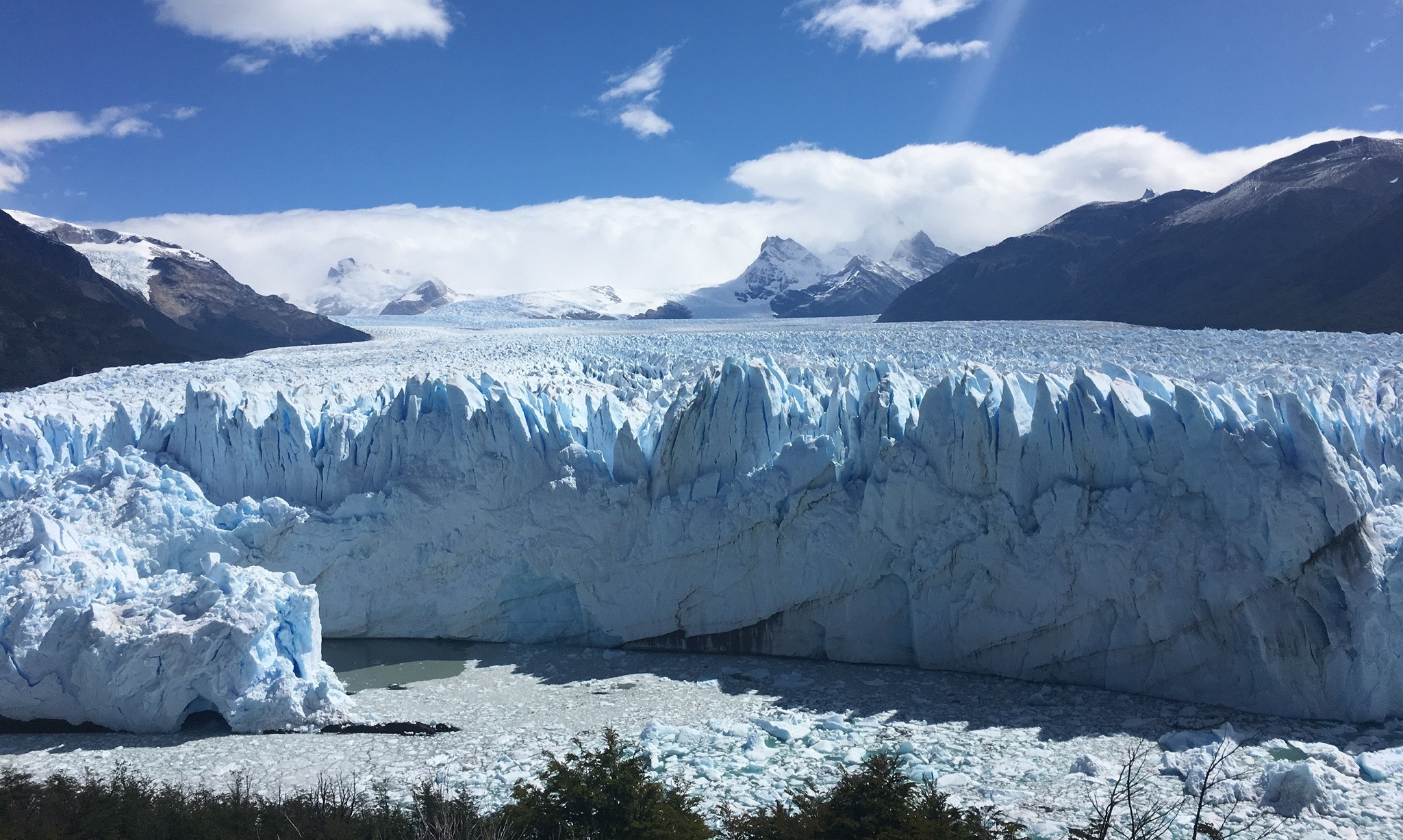There is perhaps no more spectacular place than a glacial lake. Cruising through the icy waters of Los Glaciares National Park in Patagonia, I could only imagine what the earliest explorers felt when they came across this frozen land thousands of years ago. Untouched, clean and pristine.
Indeed, the Southern Patagonian ice fields between Argentina and Chile are the third largest reserve of fresh water in the world. The ice field stretches across the southern Andes, measuring almost 220 miles (355 km) long and 30 miles (48 km) wide. This park is also home to the famous Glaciar Perito Moreno, a UNESCO World heritage site, which is about two hours from El Calafate. Named after the Argentinian explorer Francisco Moreno, this glacier stretches an incredible five km across at the front and 30 km (19 miles) across. I have never seen anything so vast – it’s beauty is almost indescribable.

What I didn’t appreciate before this trip was the role that glaciers play in our lives. Not only are they stunning and beautiful, but they are important indicators of global warming and climate change. Today, the Earth’s surface is made up of 71 percent water, 10 percent ice and 19 percent land. Glaciers store about 69 percent of the world’s fresh water. Thanks to our very well versed tour guides, I learned that ice that took centuries to develop can disappear in just a few years. As the earth’s temperature increases, glaciers are melting faster than ever before.
Without glaciers, we wouldn’t have our mountains, lakes and valleys. Glaciers form in places where snow accumulates faster than it melts. As the snow builds up, it compresses, becoming tightly packed, changing from crystals to hard round ice pellets. Over time, the pellets become fused into one piece of solid ice. With the effects of gravity, a glacier begins to move under its own weight, and exerts so much pressure that it begins to spread down a valley.

Such is the case with the Perito Moreno Glacier, which stretches an impressive 74 metres (240 ft) into the sky and an even deeper depth of 170 metres (558 ft). The Perito Moreno Glacier moves forward seven meters a day, and the noise is thunderous. In March 2016 this glacier made world headlines when the pressure built up and its ice bridge collapsed. This dam-ice bridge-rupture cycle occurs about every five years. While you can take a boat to the edge of the glacier, the view is much better from the ramps directly across from it. Watching the jagged peaks and listening to the sound of the ice moving is an experience I will never forget.
In Argentina, thousands of years ago, glaciers covered most of what is now the park near El Calafate in Argentina. As the glaciers eroded, they shaped the land, carving out valleys and woods. These glaciers also hold evidence of the first groups of hunters, who arrived in Patagonia thousands of years ago.

In addition to raising sea water levels when they melt, the widespread loss of glaciers will likely alter climate patterns in other, more complex ways. Glaciers’ white surfaces reflect the sun’s rays, helping to keep our current climate mild. When glaciers melt, heat is released, raising temperatures. When a glacier meets the water, it begins to float and then we see a rather violent process called calving, where chunks of ice fall off, and become icebergs.
According to scientists, glaciers help prevent global warming because they act as giant mirrors, deflecting sunlight from the Earth’s surface back into the atmosphere and regulating the temperature of the planet. The runoff from glacial melting forms rivers that people depend on for fresh water. With global warming occurring at an unnatural rate, glaciers are melting at a faster rate and not being restored. The only way to slow rapid glacial melting is to slow global warming.

Our day at the park was a transformative experience. As we returned to El Calafate and watched the sun set in the Andes, we were humbled and grateful to have seen one of the unforgettable wonders of the world. However, we were also reminded of the fragility of our earth, and the consequences of our everyday actions and decisions in such a carbon-laden economy. As these glaciers melt, so do the secrets of our past. Knowing they are the bell weathers of climate change, we need to take a more proactive stance to protect these vast reserves of fresh water, and sustain life as we know it.

Wonderful post! Your pictures are stunning and it was great to read such interesting facts about the glacier before I went there. I hope you don’t mind but I used your post as a link on my own blog about Perito Moreno glacier and trekking on top of it 🙂 Thanks again!
A beautifully written, informative post. You have really inspired me to go to Argentina! South America really has so much to offer. Not so long ago I was in Chile I had a similar experience – but on a volcano! I didn’t expect quite so much snow. There really is so much natural beauty in the world, we have to protect it as much as we can.
I’m so glad you enjoyed the article! Thank you for the positive feedback!